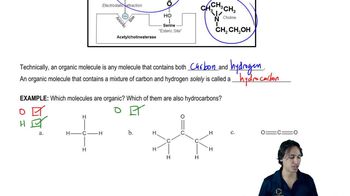What is the major product of the reaction of 2-methyl-2-butene with each of the following reagents?
c. HBr + peroxide
d. HCl + peroxide
 Verified step by step guidance
Verified step by step guidance Verified video answer for a similar problem:
Verified video answer for a similar problem:



 1:18m
1:18mMaster Overview of Hydrohalogention. with a bite sized video explanation from Johnny
Start learning